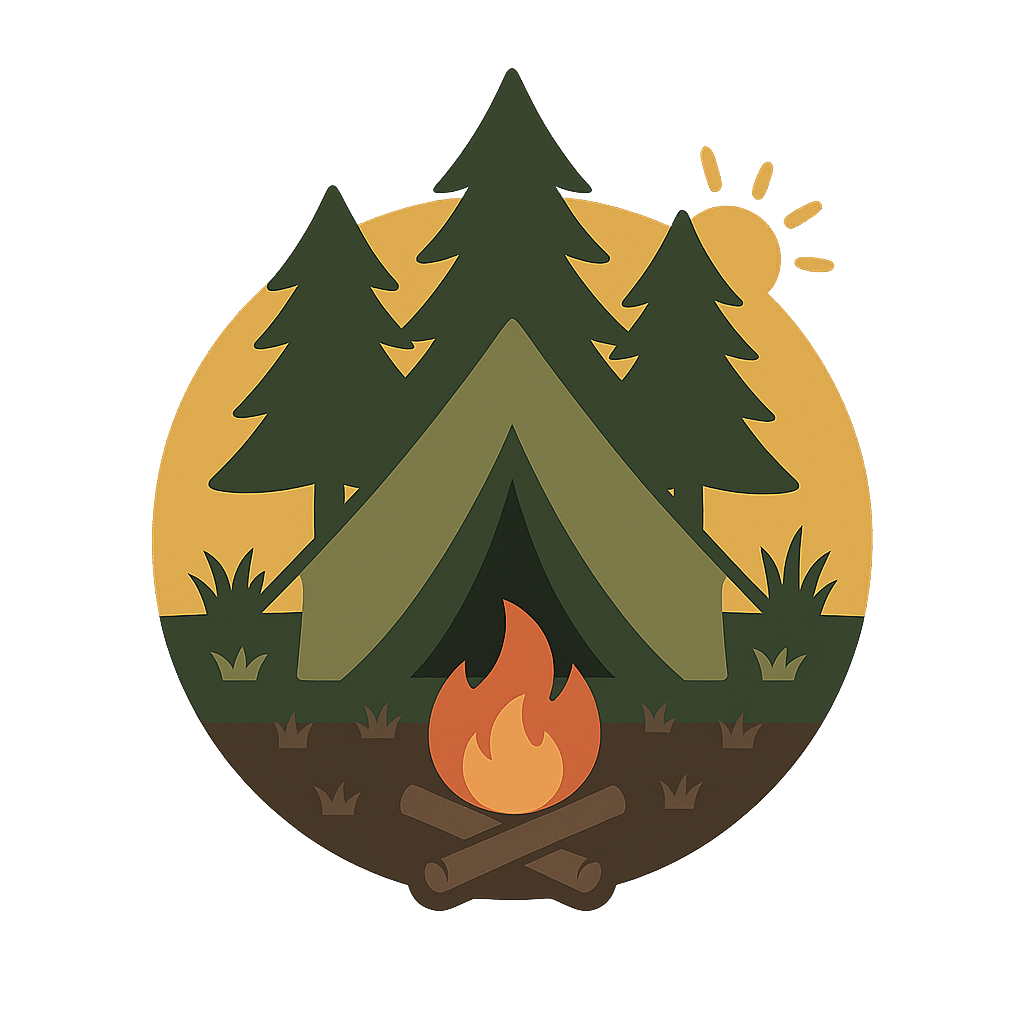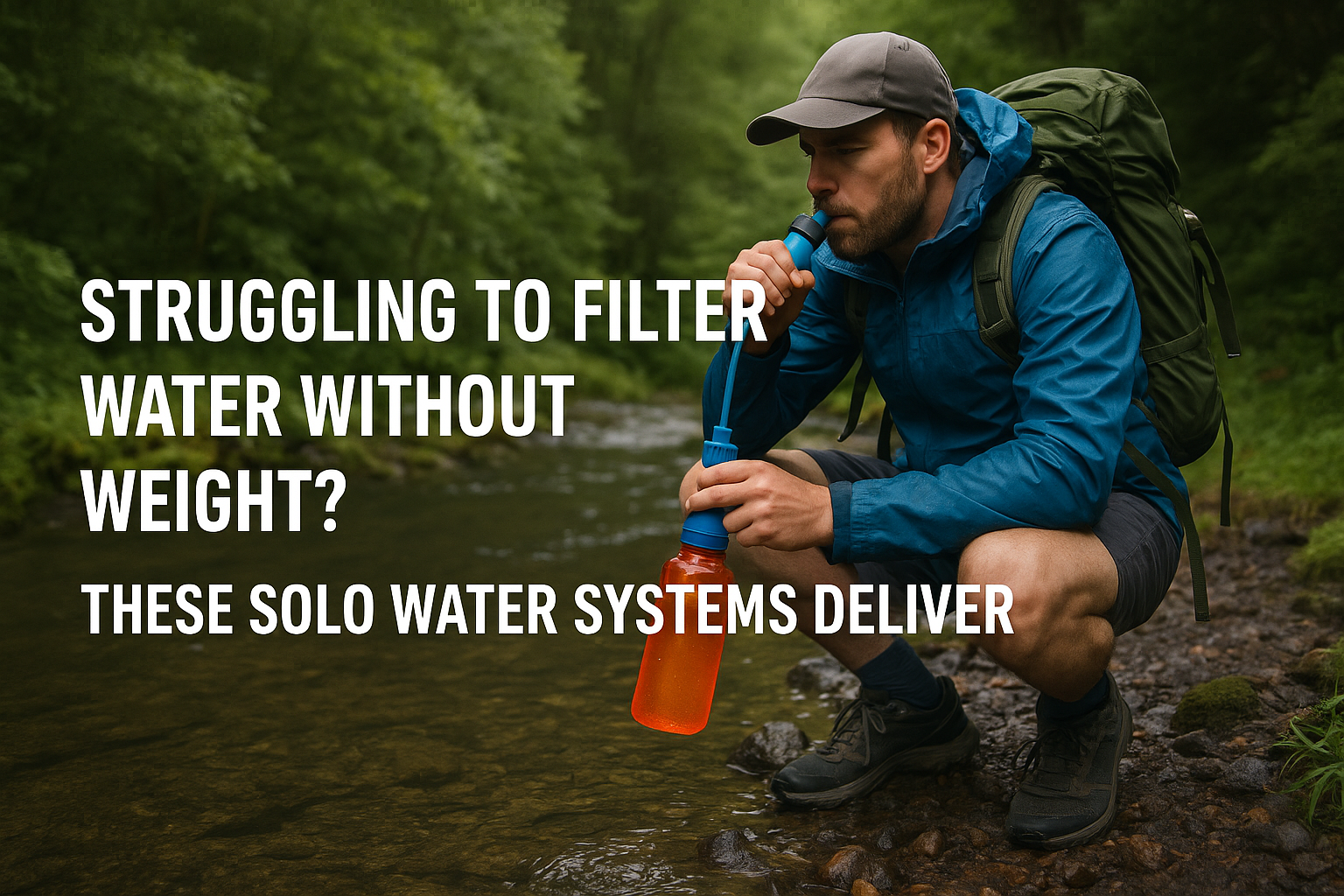You’ve got the route mapped. The shelter dialed. But the one thing that’s still messing with your solo kit?
Water.
Specifically, how to filter water without dragging around weight, bulk, or awkward setups that require clean hands, a flat spot, or a “convenient” stream that never shows up when you need it.
If you’re a solo camper, survivalist, ultralight hiker, or moto-adventurer, here’s what you already know:
Most water systems are built for groups, not ghosts.
Gravity bags? Too bulky.
Pump filters? Too many moving parts.
Squeeze filters? Fine—until your hands are shaking in the cold or the bag breaks mid-fill.
What you need is a solo-first water system that delivers:
Speed when you’re exhausted
Reliability when you’re miles from help
Minimal weight and failure points
Below, you’ll find real, field-tested solo setups that go beyond the squeeze bottle meta. These are solutions you won’t find in mainstream gear roundups—used by thru-hikers, backcountry loners, and campers who don’t have backup.
 First, Why Most Lightweight Water Filters Fail (For Solo Use)
First, Why Most Lightweight Water Filters Fail (For Solo Use)
Let’s call out the problem first:
 1. Too Many Moving Parts
1. Too Many Moving Parts
The more adapters, hoses, caps, and squeeze points you have, the more likely one fails, gets dirty, or freezes.
 2. Not One-Hand Usable
2. Not One-Hand Usable
Many solo systems require both hands, a stable surface, or a “clean” bag that you can’t contaminate. Try pulling that off in the wind or in the dark.
 3. They Assume Ideal Sources
3. They Assume Ideal Sources
Puddle water, muddy seeps, or trickling moss-covered rocks? Most squeeze filters hate these—and you can’t always wait for a stream.
 4. Backflushing = Extra Gear
4. Backflushing = Extra Gear
If your filter requires backflushing, it means:
- You’re carrying extra water
- You need pressure or syringe systems
- And your filter becomes dead weight when it clogs
 What Solo Campers Actually Trust (That’s NOT in Mainstream Lists)
What Solo Campers Actually Trust (That’s NOT in Mainstream Lists)
Let’s get into real solo systems you can rely on when you’re alone, tired, and out of reach.
 1. The “Modified Scoop + UV Kill” System
1. The “Modified Scoop + UV Kill” System
Weight: ~3.8 oz
Works when: You have any water—even from still or sketchy sources
Core gear:
- Collapsible cut-down scoop bottle (like an old Smartwater or Platypus bag cut in half)
- Katadyn BeFree or SteriPEN Ultralight UV Purifier
- Optional: 1–2 Micropur tablets (for dead water backup)
Why it works:
You scoop even shallow or silty water, pour into your container, swirl for 60 seconds with UV, and drink.




Field note: This is the preferred failproof backup for solo survivalists in arid zones or alpine terrain where flowing water is rare.
 2. “Midline Purifier + Dry Bag Reservoir” (Bushcrafter’s Hack)
2. “Midline Purifier + Dry Bag Reservoir” (Bushcrafter’s Hack)
Weight: 5.5 oz
Core gear:
- 1L dry bag with drinking cap (like the Vargo BOT bottle, Evernew, or CNOC)
- Inline purifier (like Sawyer Mini, but pre-primed)
- 2mm paracord loop
How it works:
- Scoop with dry bag
- Hang bag on branch, bike handlebar, or trekking pole
- Suck directly or let it gravity-feed into your bottle
Bonus: You can use this as a passive camp setup when your hands are full (eating, cooking, fixing shelter)



 3. “Sock Prefilter + Squeeze = Silty Water Hack”
3. “Sock Prefilter + Squeeze = Silty Water Hack”
If you’ve ever tried to filter from silty sources (muddy ponds, beaver swamp, puddle runoff), you know this:
Your filter clogs almost instantly.
The fix?
- Cut off a piece of fine-mesh fabric (nylon stocking, clean sock, or coffee filter)
- Wrap it around your squeeze bag opening
- Secure with rubber band or hair tie
- Pre-filter all water before it enters the actual filter
Result:
- Your Sawyer or BeFree lasts 4x longer
- No backflushing needed
- Silty water becomes usable—even if you wouldn’t swim in it


 4. “No Squeeze, No Pump” Option: Passive Straw System with Redundancy
4. “No Squeeze, No Pump” Option: Passive Straw System with Redundancy
What it is:
- A basic filter straw (like Lifestraw Peak Series or HydroBlu Sidekick)
- Paired with one high-flow container (or backup treated water)
- And a short piece of flexible silicone tubing
Why it works:
- You can sip without pressure, lying prone if needed
- You can fill from almost any puddle, drink directly
- Tubing lets you reach below waterline or past slime layer
Bonus: Carry a Ziplock of charcoal + fine sand to pack into the tube if you must build a bush filter in an emergency
 Pro Tips: Optimizing Any Ultralight Solo Water Kit
Pro Tips: Optimizing Any Ultralight Solo Water Kit
 1. Use a Half-Cut Gatorade or Smartwater Bottle as Your Scoop
1. Use a Half-Cut Gatorade or Smartwater Bottle as Your Scoop
- Regular squeeze bags suck for shallow sources
- A cut bottle acts as:
- Scoop
- Sink
- Filter sleeve
- Emergency cup or wash basin
Costs nothing. Saves trips when your Platypus bag won’t scoop from trickles.
 2. Label Everything “DIRTY” or “CLEAN” With Sharpie
2. Label Everything “DIRTY” or “CLEAN” With Sharpie
Even solo, it’s easy to cross-contaminate. Especially:
- Filter threads
- Bite valves
- Bottle caps
Mark your clean bottle, straw intake, and caps. When tired, you’ll thank yourself.
 3. Sleep With Your Filter in Freezing Temps (or Lose It)
3. Sleep With Your Filter in Freezing Temps (or Lose It)
A frozen hollow fiber filter is dead. You might not even know it.
Wrap it in a sock and keep it in your sleeping bag overnight—even if it’s dry.
The BeFree, Sawyer Mini, and HydroBlu are all vulnerable.
 4. Build a Redundant System That Adds 1 oz or Less
4. Build a Redundant System That Adds 1 oz or Less
Your main filter will fail. It’s not if—it’s when.
Add one of these as your “soul-saver” backup:
- 2 Aquatabs in a waterproof match case (0.3 oz)
- UV LED USB stick (1.2 oz)
- 3 iodine tablets wrapped in foil + paper towel for taste removal
Redundancy = survival, not overpacking.
 5. Track Filter Flow Rate on Day 1, 3, 5
5. Track Filter Flow Rate on Day 1, 3, 5
Squeeze filters lose speed gradually—but you’ll feel it on mile 40.
Time how long it takes to fill 1L on each resupply day. If it doubles or triples, start planning your next stop or backup switch.
 The Best Solo Use Cases, Based on Trip Type:
The Best Solo Use Cases, Based on Trip Type:
| Trip Type | Best System | Why It Works |
|---|---|---|
| Moto-Camping | Dry bag gravity + UV backup | Requires minimal hand strength, works at camp |
| Survival Overnight | Straw + chemical tab | No pressure required, lasts dry |
| Thru-Hiking | BeFree + scoop mod | Fastest flow rate, easy cleaning |
| Desert Solo | UV + scoop bottle | Lightest and no clog issues |
| Rain Forests | Sock prefilter + squeeze | Manages silty/murky water sources |
 Final Thoughts: Water is Life — Not Just Gear
Final Thoughts: Water is Life — Not Just Gear
Your shelter can fail. Your stove can break.
But if your water system goes down, you’re done.
So stop packing like a blogger doing gear reviews, and start building systems like someone who might not see another human for 3 days.
The best water system:
- Fits your terrain
- Works when you’re too tired to think
- Has a backup that costs less than an ounce
Because solo means no one’s coming to fix it—and your water shouldn’t be the thing that breaks you.

